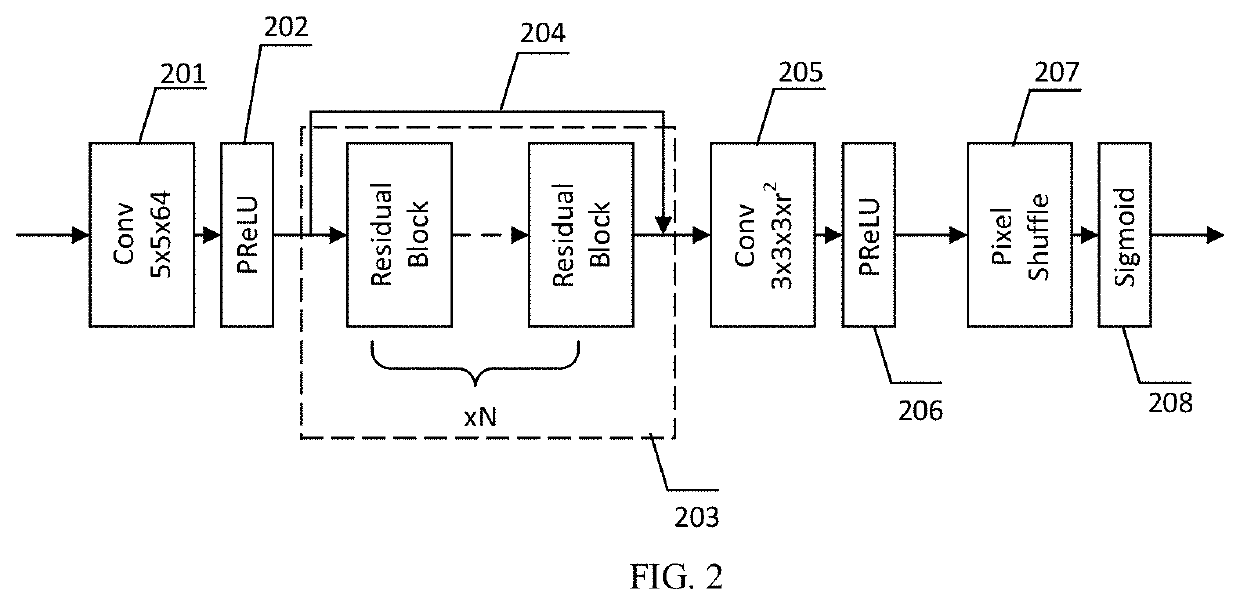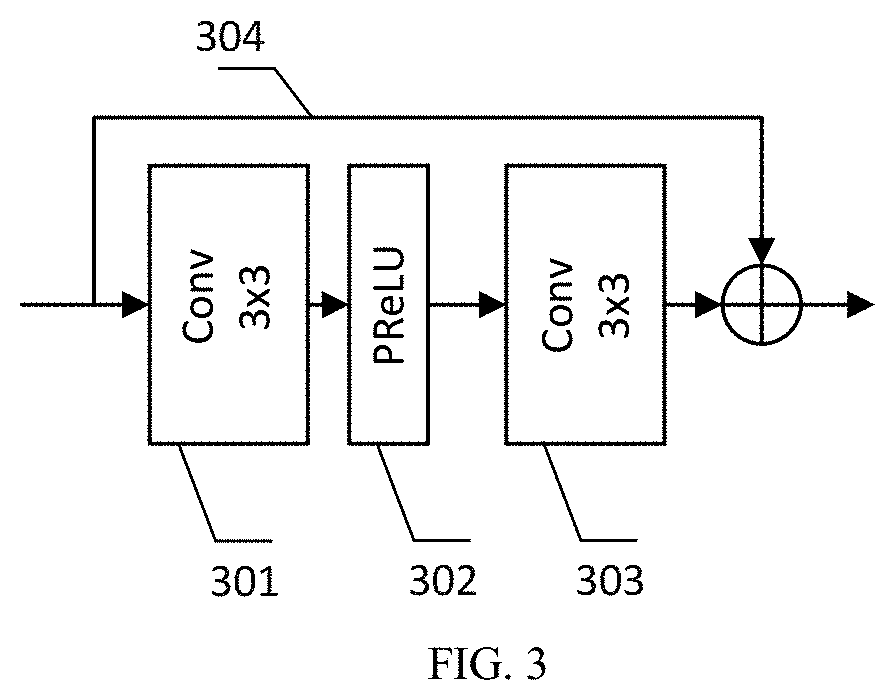Method And Apparatus Of Collaborative Video Processing Through Learned Resolution Scaling
- Summary
- Abstract
- Description
- Claims
- Application Information
AI Technical Summary
Benefits of technology
Problems solved by technology
Method used
Image
Examples
Embodiment Construction
[0023]FIG. 1 illustrates an exemplary CVP system of the present principles. A spatial down-sampling filter 101 is optionally applied to downscale a high resolution video input to a low resolution representation. Alternatively, a low resolution video can be directly captured instead of being converted from a high resolution version. High resolution video, such as 1080p shown in FIG. 1, can be obtained from a camera, or a graphical processing unit buffer. A typical down-sampling filter can be bilinear, or bicubic, or even convolutional based. An end-to-end video coding system 102 is then utilized to encode the low resolution video, including color space transform (e.g., from RGB to YUV) 103, video encoding using compatible codec 104 (e.g., from YUV source to binary strings), streaming over the Internet 105, and corresponding video decoding 106 (e.g., from binary strings to YUV sources), and color space inverse transform (e.g., from YUV to RGB prior to being rendered) 107. Downscaling ...
PUM
 Login to View More
Login to View More Abstract
Description
Claims
Application Information
 Login to View More
Login to View More - Generate Ideas
- Intellectual Property
- Life Sciences
- Materials
- Tech Scout
- Unparalleled Data Quality
- Higher Quality Content
- 60% Fewer Hallucinations
Browse by: Latest US Patents, China's latest patents, Technical Efficacy Thesaurus, Application Domain, Technology Topic, Popular Technical Reports.
© 2025 PatSnap. All rights reserved.Legal|Privacy policy|Modern Slavery Act Transparency Statement|Sitemap|About US| Contact US: help@patsnap.com



